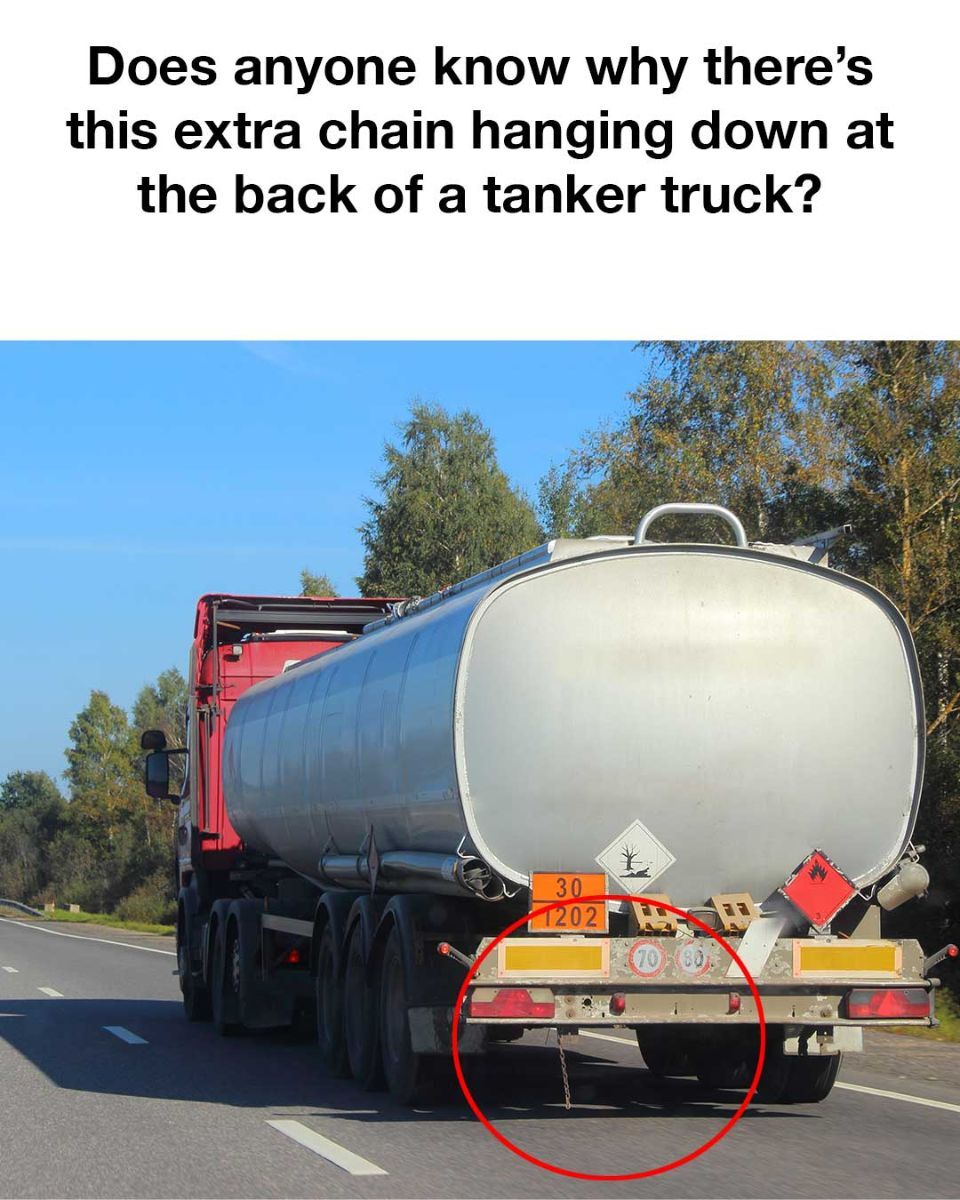Tanker trucks are specialized vehicles designed to carry liquids or gases such as gasoline, water, chemicals, and even food-grade substances. They feature a large, cylindrical tank securely mounted on a robust truck frame, and every aspect of their design is carefully engineered to ensure that the cargo reaches its destination safely and efficiently.

One distinctive feature that often catches the eye on these vehicles is a chain hanging from the rear. Although it may appear to be a simple, unimportant accessory, this chain plays a crucial role in the overall safety system of the tanker truck. The primary function of the chain is to dissipate static electricity that can build up inside the tank during transit. When flammable liquids are being transported, the movement of the liquid inside the tank creates friction, much like the static you experience when rubbing a balloon on your hair. This friction generates static electricity, and if it is not properly discharged, it can lead to the formation of sparks. In an environment where flammable vapors are present, even a tiny spark can ignite the fumes, potentially causing a fire or even an explosion. To prevent such dangerous occurrences, the chain is designed to drag along the ground, providing a continuous and safe path for the static electricity to flow into the earth. This process, known as grounding, effectively neutralizes any electrical charge before it has a chance to accumulate to hazardous levels. The practice of using grounding chains on tanker trucks became standard as the industry learned more about the risks associated with static discharge during the transport of fuel. In earlier years, incidents caused by uncontrolled static electricity were relatively common, sometimes resulting in devastating fires and explosions. As a result, safety regulations were established that mandated the installation of grounding chains to control static buildup. Over time, these safety measures have been reinforced by stringent industry standards and guidelines set by regulatory bodies such as the United States Department of Transportation.
These rules cover many aspects of tanker truck operation, including how the tank is constructed, the maximum pressure it can safely withstand, and the measures required to control static electricity. Regular inspections ensure that the grounding chain remains in proper working condition, and any signs of wear, rust, or damage must be promptly repaired or replaced to maintain safety. While grounding chains are a traditional method for controlling static electricity, modern tanker trucks sometimes incorporate additional techniques to further enhance safety. For example, some trucks are equipped with special reels and cables that can be connected to a grounding point during loading and unloading operations. There are also fuel additives designed to reduce the buildup of static electricity, as well as innovative materials and coatings that minimize friction within the tank. Despite these advancements, the grounding chain remains a vital component because of its simplicity, reliability, and proven effectiveness in preventing accidents caused by static discharge. It is important to address common misconceptions about the chain as well. Some people mistakenly believe that the chain is an outdated piece of equipment or that it serves other functions, such as stabilizing the truck or assisting with braking. In reality, its sole purpose is to provide a safe route for static electricity to discharge into the ground, thereby preventing sparks that could ignite flammable vapors. In summary, the chain hanging from the back of a tanker truck is far more than a decorative or outdated accessory; it is an essential safety feature that helps protect both the vehicle’s operators and the public by preventing the dangerous buildup of static electricity. Maintaining and inspecting this chain regularly is critical, as its effectiveness depends on it being in good condition and in constant contact with the ground. Understanding the function and importance of this grounding chain highlights how even the simplest components of a tanker truck contribute to overall transport safety, ensuring that materials are moved securely while preventing potential accidents. In conclusion, by safely grounding any static charge that builds up during transit, this unassuming chain plays an indispensable role in protecting tanker truck operations and ensuring the secure transport of hazardous materials, while regular maintenance and inspections guarantee its effectiveness in preventing dangerous sparks and potential accidents every single day without fail.





